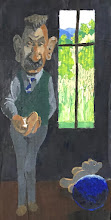Subscribe to:
Post Comments (Atom)
skip to main |
skip to sidebar

My Blog List
Facebook Badge
Search This Blog
Followers
Blog Archive
-
▼
2025
(43)
-
▼
July
(43)
- H
- Head
- Midnight Picnic
- Tuesday Model
- K
- Moment
- Dogface, France, Summer of '44
- Kurt Vonnegut
- Danciong with Baba Yaga
- C
- Working on Kokopelli Collage
- Bateson's Criteria for Mind
- Empty Model Stand
- Brian for Robert
- Study of Onions and Sage
- I
- Homage to Zap
- Keith
- Damsel with a Dulcimer
- Tom Benton
- Portraits
- Rhyming Unaware
- Speak!
- Madeline in April (Once More Once)
- Lost Loves
- Landscape
- Attaboy!
- O
- R
- Thinking of Johnny Orchard
- Characters for Barsy's Almonds
- Gooseneck Hollow Serenade
- Calvinist Preacher Enlightening the Shmoos
- Encounter
- Keepin' It Real
- Airless Void III
- Airless Void II
- Airless Void I
- Life Drawing Studio
- Begone!
- Martian Horse
- Buddha and Zeke
- High Noon: Space Cowboy at 76
-
▼
July
(43)
About Me
- Tom Roark
- Reopening Can't Learn Less after a long hiatus. My main occupation now is making pictures, and this is where you can see them.


1 comment:
Bateson divided the world between the mind and the purely physical. Mind is found in living cells, organisms, populations, ecosystems, governments, businesses, and even certain instruments—for example thermostats.
His criteria are that a mind is an aggregate of interacting parts, the interactions being triggered by difference; that it needs collateral energy; that the interactions are circular or more complex; the effects of difference are coded versions of the events that preceded them (light from a source stimulates a retina to signal a brain which interprets and stores an memory of an image). The last criterion, "The description and classification of these processes of transformation disclose a hierarchy of logical types immanent in the phenomena," might require explanation. In the example of an eye "seeing" an object, each stage becomes a little more abstract than the one before it. We really don't know what the object is, but the image or its memory allows us to operate in the world.
Post a Comment